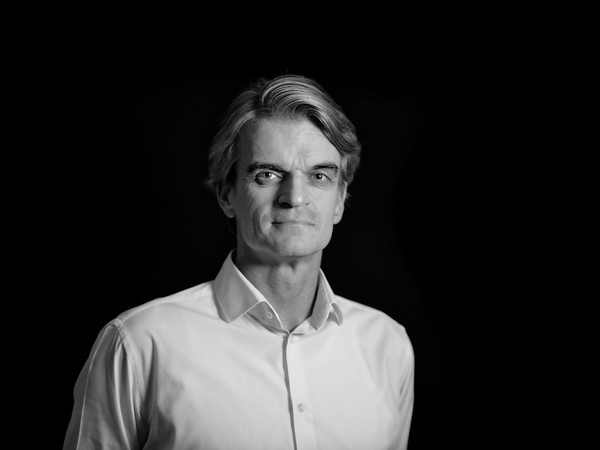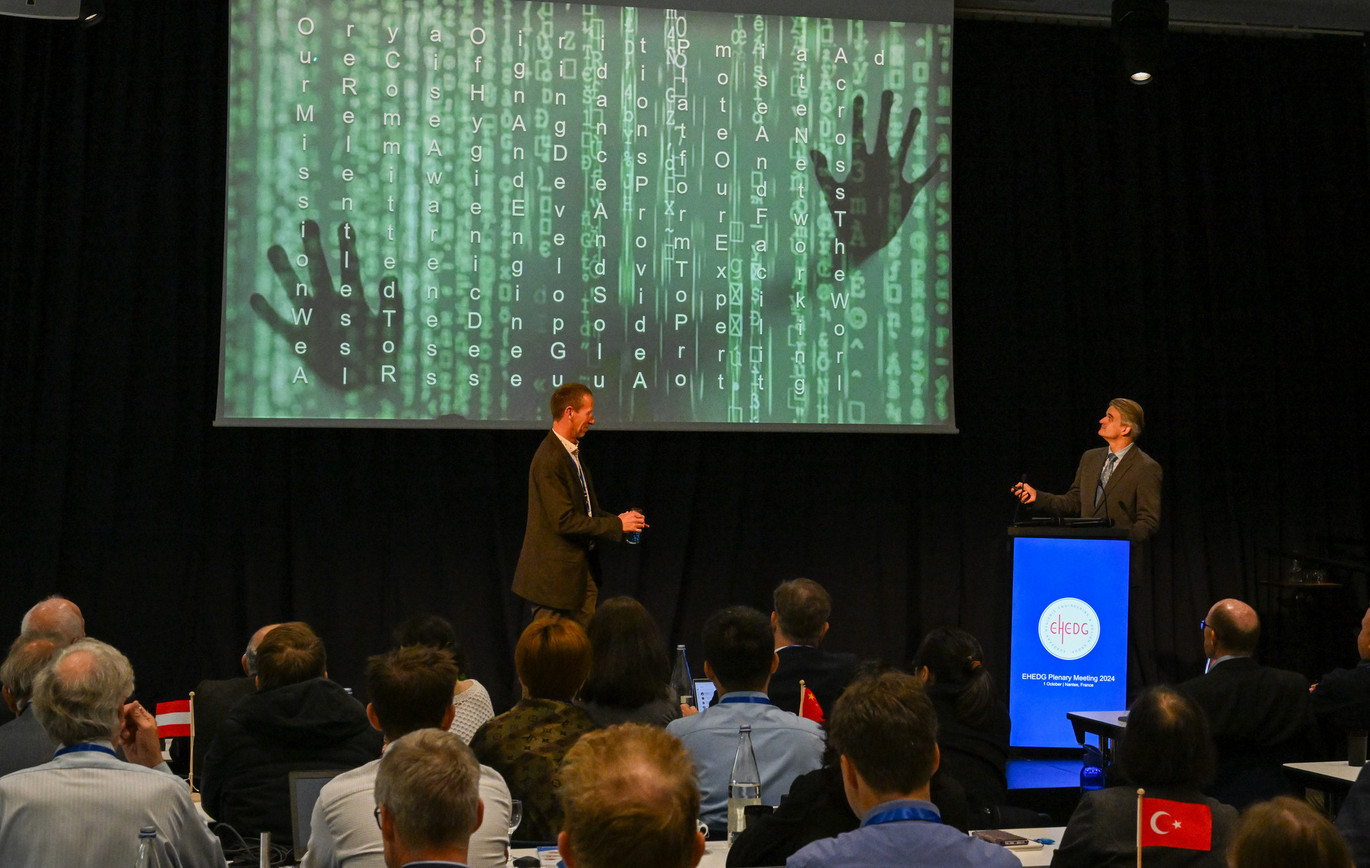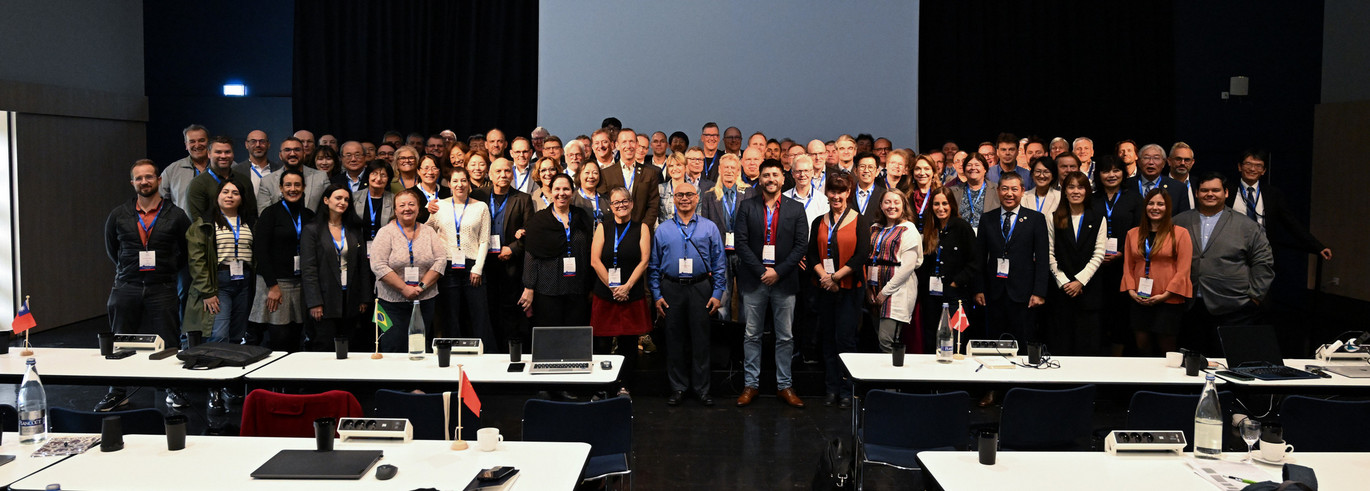Adwy van den Berg on EHEDG growth, innovation and AI shaping the future of hygiene design

“We are the missionaries that bring the hygienic design and engineering message to the industry, thanks to the valuable input coming from our members. This way we contribute to the sustainability goals.”
EHEDG has been at the forefront of innovations in hygienic design that have had a major impact on the global food industry. In this interview, Adwy van den Berg, the organisation's Director, reveals the current themes resonating in the working groups, presents plans for a more sustainable future and shares inspiring insights from the recent World Congress. What is the impact of artificial intelligence on hygienic design? How is EHEDG supporting growth and business benefits? And what lies ahead in the coming years? Find out all this and more in our article.
What themes do you think are currently resonating in the working groups?
Adwy van den Berg: As we speak there are a lot of themes resonating in our EHEDG working groups, since we have over 30 working groups that are actively working on revisiting and updating the Guidelines currently in the market that have last been published 5 years ago or longer, like “Welding”, “Materials of Construction” and “Lubricants”. But we also started new working groups on “Robotics”, “Sustainability”, “Chocolate processing” and most recently “Utilities”.
What was your impression of the last congress in Nantes? Which discoveries made the biggest impression on you?
Adwy van den Berg: We got a lot of positive feedback from our participants, which were participating in a higher number than ever before, our sponsors and speakers regarding the EHEDG World Congress 2024 in Nantes. Personally I was very happy to see a much larger representation of people in the age group between from 21 to 35 years old and nearly 30% of the participants were female. Both segments are important for our industry and we specifically targeted some of our communication efforts towards these. So it was very nice to see that this worked out.
The Sponsor tour was also one of the initiatives that we really liked at this year’s congress. Participants were able to visit several sponsors and have a short introduction to each of them and we think this worked very well for both parties. We look forward to expend more on this concept in the next edition. Parallel sessions higher diversity of HD related subjects to different target audiences in the industry
Was there one idea, one thing that you felt resonated among the participants?
Adwy van den Berg: I think what resonated amongst the participants was the keynote speech by Anthony Chemaly on how AI will influence the food processing industry. There were a lot of discussion in the corridors what AI will bring as opportunities for the food industry as a whole. It sparked a lot different ideas. Very interesting discussion which we will monitor closely and come on to our members on a few occasions next year and beyond.

How is EHEDG expanding at the moment and how do you see its position and benefits in the business now?
Adwy van den Berg: This is a very broad question, which can interpreted in different ways, but I presume you are referring to our membership growth and the new regions that we are active in, with new regional committees.
Regarding the first part of your question; Yes, EHEDG is expanding more than 10% in members year on year over the last 3 years.
Our positioning and reputation is stronger than 5 years ago, now recognised in many regions where we don’t have an official EHEDG Regional Section yet. We see this reflected in the number of EHEDG Hygienic Design training request that we receive from regions like Egypt, the Emirates, Indonesia, Saudi Arabia and more.
We are helping to put hygienic design on the agenda of the legislators and the industry, from which the industry and the end consumers will benefits. But I realize that we just made the first steps in this journey and we still have a long journey ahead of us … but the topic is on our agenda, more prominent than before.
What are the future plans and directions for EHEDG?
Adwy van den Berg: We have many future plans, to mention a few, we will introduce new e-learning modules for example on “Cleaning & Disinfection”, we are working on a central online examination platform, after the summer holidays we plan to launch our Mobile Hygienic Design Gamification App. And of course the new Open Plant Cleaning Equipment (OPC) Certification will be put in the market, we have new regional sections lined up. These are just a few of the initiatives that we are working on and there is more exciting stuff to come.
On the basis of your knowledge, can you estimate the cost savings that can be achieved by companies through the implementation of hygienic design practices in their processes?
Adwy van den Berg: This of course depends on the size of the company, taking into account the number of production lines. The industry that they are working in, as you can imagine there will be differences between introducing hygienically designed production lines in a poultry plant compared to a soft drink factory. And a lot of other variables.
A beautiful example of the potential cost savings that can be made through the introduction of hygienically designed production lines is the business case from one of our members that Sven Fischer from Krones presented at the previous EHEDG World Congress in Munich. The case shows how the design of equipment influences the ease and efficiency of cleaning and sterilisation in a manufacturing environment of a low acid product (a soft drink). The design improvements on a single production line can lead to more that €50,000 in savings per week, through less cleaning time, less downtime and longer production runs. This a saving of more than two-and-a-half million Euros per year!
Given that hygienic design can often be perceived as a costly investment, what strategies does EHEDG suggest to F&B companies to justify these expenses through long-term savings and efficiencies?
Adwy van den Berg: This indeed a rhetorical question, the answer is as you put it approach it with a more long-term time horizon. With the introduction of hygienically designed equipment or processes a food producing company doesn’t improve their quarterly figures with in a year. EHEDG focuses on risks based decisions in the whole industry. The payback period will be slightly longer, compared to cheaper more standard (more difficult to clean and more risky materials and equipment) but in the long run the cost savings are a multitude. And this without taking into consideration the possible recalls and reputation damage that a company will avoid.
One of the big issues, I dare say for the whole world, at the moment is sustainability. How does this apply to the working groups and the final guidelines?
Adwy van den Berg: As answered in the first question, we have a working group that is finalizing an EHEDG white paper on sustainability as we speak. The white paper emphasizes on the importance of sustainability in food production, from farm to fork. With a focus on food processing and packaging operations, especially the cleaning and maintenance processes. It shows how hygienic design reduces energy, water, chemical consumption, and overcomes product losses and recalls. And as such contributing to a more sustainable food production process, with reduced carbon emissions.

And how do you manage within the organisation to achieve these goals?
Adwy van den Berg: As you know we at EHEDG don’t produce foods ourselves, but we are the missionaries that bring the hygienic design and engineering message to the industry, thanks to the valuable input coming from our members. This way we contribute to the sustainability goals.
I would stay on the subject of sustainability. Are you being approached more by large manufacturing companies who are looking for ways to get closer to best hygiene practices while reducing their carbon footprint?
Adwy van den Berg: No, we get the question from all EHEDG member categories, big and small, equipment manufacturer, the packaging solution providers, the food processors and end producers, as well as consulting agencies. Most of them are represented in the working group, in which we also have members from academic institutes.
Finally, will you reveal or at least suggest a theme for the next congress in 2026?
Adwy van den Berg: I have to disappoint you, the theme is not know yet, this is an exercise that we have on the agenda for early next year.
EHEDG is a cornerstone of progress in the food industry, tirelessly promoting the critical importance of hygienic design. By addressing today's challenges such as sustainability and artificial intelligence, EHEDG underlines that hygiene is not just a regulatory necessity, but a fundamental pillar of safety, efficiency and innovation. Whether it's reducing costs, protecting the environment or ensuring food quality for consumers, EHEDG continues to lead with purpose and expertise. The future of food safety and hygienic design is not only promising - it is essential, and it is in the best possible hands. And we are delighted to be part of it.
